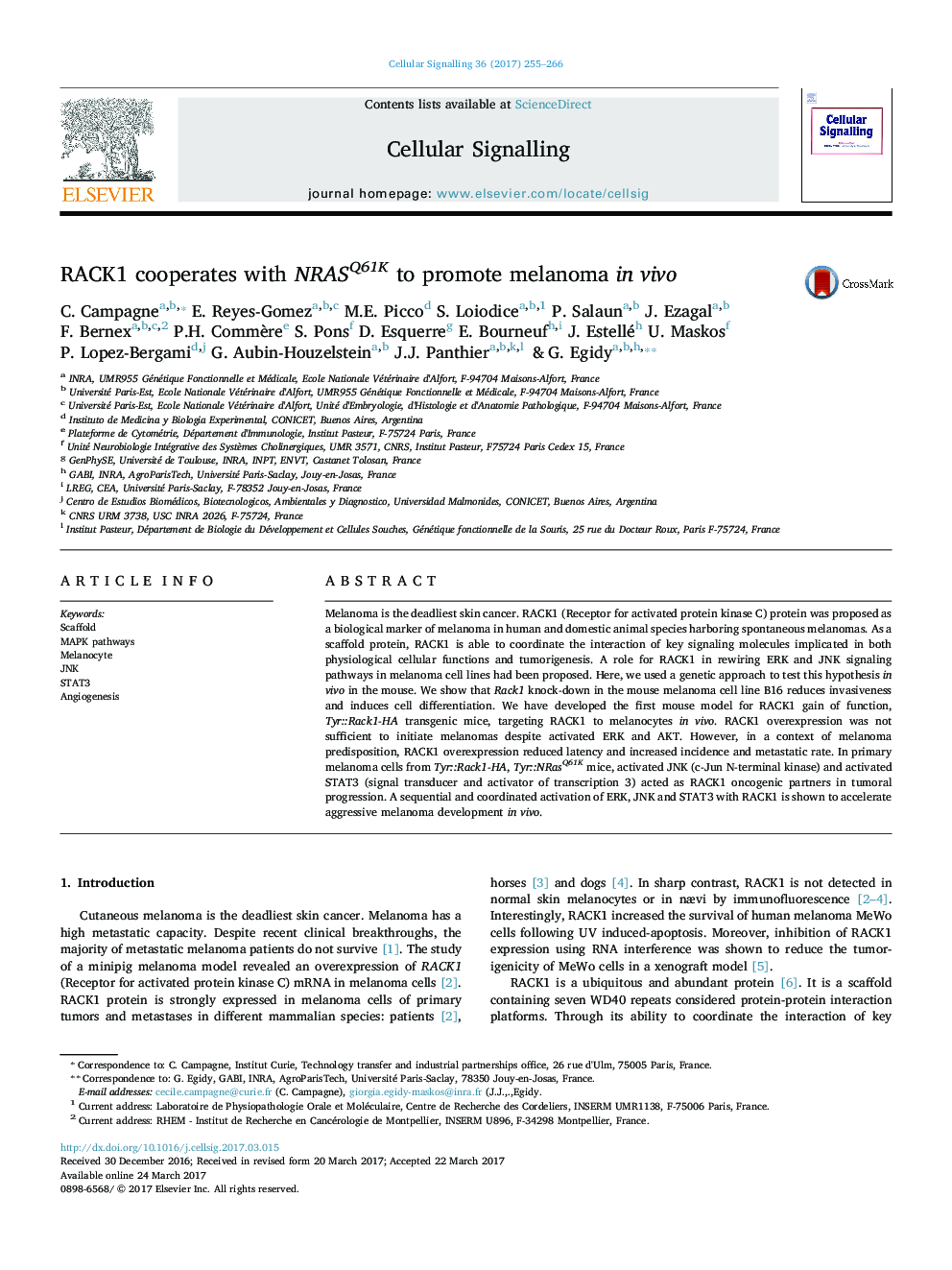| Article ID | Journal | Published Year | Pages | File Type |
|---|---|---|---|---|
| 5509233 | Cellular Signalling | 2017 | 12 Pages |
Abstract
Melanoma is the deadliest skin cancer. RACK1 (Receptor for activated protein kinase C) protein was proposed as a biological marker of melanoma in human and domestic animal species harboring spontaneous melanomas. As a scaffold protein, RACK1 is able to coordinate the interaction of key signaling molecules implicated in both physiological cellular functions and tumorigenesis. A role for RACK1 in rewiring ERK and JNK signaling pathways in melanoma cell lines had been proposed. Here, we used a genetic approach to test this hypothesis in vivo in the mouse. We show that Rack1 knock-down in the mouse melanoma cell line B16 reduces invasiveness and induces cell differentiation. We have developed the first mouse model for RACK1 gain of function, Tyr::Rack1-HA transgenic mice, targeting RACK1 to melanocytes in vivo. RACK1 overexpression was not sufficient to initiate melanomas despite activated ERK and AKT. However, in a context of melanoma predisposition, RACK1 overexpression reduced latency and increased incidence and metastatic rate. In primary melanoma cells from Tyr::Rack1-HA, Tyr::NRasQ61K mice, activated JNK (c-Jun N-terminal kinase) and activated STAT3 (signal transducer and activator of transcription 3) acted as RACK1 oncogenic partners in tumoral progression. A sequential and coordinated activation of ERK, JNK and STAT3 with RACK1 is shown to accelerate aggressive melanoma development in vivo.
Related Topics
Life Sciences
Biochemistry, Genetics and Molecular Biology
Biochemistry
Authors
C. Campagne, E. Reyes-Gomez, M.E. Picco, S. Loiodice, P. Salaun, J. Ezagal, F. Bernex, P.H. Commère, S. Pons, D. Esquerre, E. Bourneuf, J. Estellé, U. Maskos, P. Lopez-Bergami, G. Aubin-Houzelstein, J.J. Panthier, G. Egidy,
